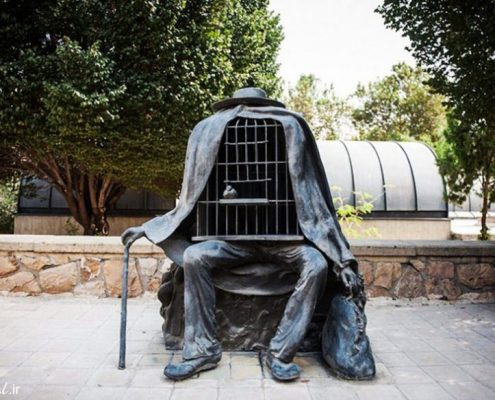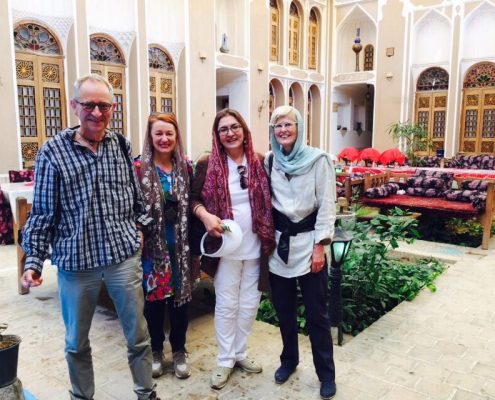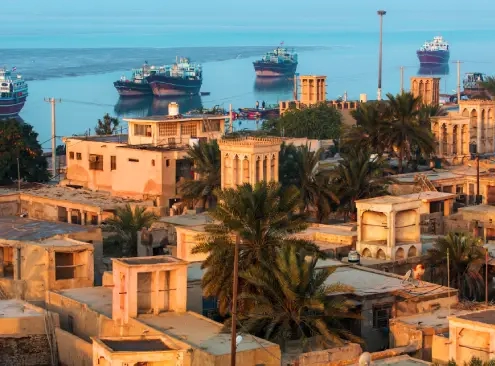 https://irandoostan.com/dostcont/uploads/2017/05/Tehran-Museum-of-Contemporary-Art-8.jpg
584
900
Travel to Iran
https://irandoostan.com/dostcont/uploads/2025/05/Irandoostan-logo.webp
Travel to Iran2017-05-15 13:39:502025-04-13 15:17:10Tehran Museum of Contemporary Art: Photos, Architecture
https://irandoostan.com/dostcont/uploads/2017/05/Tehran-Museum-of-Contemporary-Art-8.jpg
584
900
Travel to Iran
https://irandoostan.com/dostcont/uploads/2025/05/Irandoostan-logo.webp
Travel to Iran2017-05-15 13:39:502025-04-13 15:17:10Tehran Museum of Contemporary Art: Photos, Architecture
From 2016 to March 2017, 6 million tourists travelled to Iran
From 2016 to 2017, 6 million tourists traveled to Iran. The statistics…

Bandar Abbas (Beach, Weather, Port, Map)
Bandar Abbas is a port city and it is the capital of Hormozgan…

Qeshm Island, The Paradise of Geologists + Photos
Qeshm Island, located in the serene waters of the Persian Gulf,…

All about Hengam Island (Weather, Dolphins, Ferry, Map)
Hengam Island is located in the south of Qeshm Island and is…

Hormuz Island (Weather, Things to Do, Map)
Hormuz Island, with an area of approximately 42 km2, is a piece…

Hormozgan Province (Things to Do, Weather, Beach, Map)
Situated on the southern coast of Iran, Hormozgan Province is…
 https://irandoostan.com/dostcont/uploads/2017/04/photo_2017-04-09_13-37-37-e1516537785564.jpg
300
400
Travel to Iran
https://irandoostan.com/dostcont/uploads/2025/05/Irandoostan-logo.webp
Travel to Iran2017-04-09 13:49:002023-10-16 16:59:49An Inspiring Tour by Truck to Discover the Beauties of Iran
https://irandoostan.com/dostcont/uploads/2017/04/photo_2017-04-09_13-37-37-e1516537785564.jpg
300
400
Travel to Iran
https://irandoostan.com/dostcont/uploads/2025/05/Irandoostan-logo.webp
Travel to Iran2017-04-09 13:49:002023-10-16 16:59:49An Inspiring Tour by Truck to Discover the Beauties of Iran https://irandoostan.com/dostcont/uploads/2017/04/world-health-day-2017.jpg
700
700
Travel to Iran
https://irandoostan.com/dostcont/uploads/2025/05/Irandoostan-logo.webp
Travel to Iran2017-04-06 12:05:262023-09-13 11:25:04The World Health Day: 7 April
https://irandoostan.com/dostcont/uploads/2017/04/world-health-day-2017.jpg
700
700
Travel to Iran
https://irandoostan.com/dostcont/uploads/2025/05/Irandoostan-logo.webp
Travel to Iran2017-04-06 12:05:262023-09-13 11:25:04The World Health Day: 7 April
Golestan Palace Complex, Tehran: Photos, Video, History
Golestan Palace in Tehran is one of the most spectacular places…
 https://irandoostan.com/dostcont/uploads/2017/03/Espinas-Palace-Hotel.jpg
457
850
Travel to Iran
https://irandoostan.com/dostcont/uploads/2025/05/Irandoostan-logo.webp
Travel to Iran2017-03-12 11:02:092025-04-16 15:22:06Espinas Palace Hotel, Tehran (Book, Review, Photos)
https://irandoostan.com/dostcont/uploads/2017/03/Espinas-Palace-Hotel.jpg
457
850
Travel to Iran
https://irandoostan.com/dostcont/uploads/2025/05/Irandoostan-logo.webp
Travel to Iran2017-03-12 11:02:092025-04-16 15:22:06Espinas Palace Hotel, Tehran (Book, Review, Photos) https://irandoostan.com/dostcont/uploads/2017/03/COTTM-2017-Iran-Doostan-e1516533792290.jpg
392
600
Travel to Iran
https://irandoostan.com/dostcont/uploads/2025/05/Irandoostan-logo.webp
Travel to Iran2017-03-11 11:24:532020-06-10 21:19:47We are attending the next big travel show COTTM 2017
https://irandoostan.com/dostcont/uploads/2017/03/COTTM-2017-Iran-Doostan-e1516533792290.jpg
392
600
Travel to Iran
https://irandoostan.com/dostcont/uploads/2025/05/Irandoostan-logo.webp
Travel to Iran2017-03-11 11:24:532020-06-10 21:19:47We are attending the next big travel show COTTM 2017 https://irandoostan.com/dostcont/uploads/2017/03/photo_2017-03-07_15-30-59.jpg
180
260
Travel to Iran
https://irandoostan.com/dostcont/uploads/2025/05/Irandoostan-logo.webp
Travel to Iran2017-03-07 15:32:212020-06-10 21:19:53Iran Doostan is attending WTM Latin America 2017
https://irandoostan.com/dostcont/uploads/2017/03/photo_2017-03-07_15-30-59.jpg
180
260
Travel to Iran
https://irandoostan.com/dostcont/uploads/2025/05/Irandoostan-logo.webp
Travel to Iran2017-03-07 15:32:212020-06-10 21:19:53Iran Doostan is attending WTM Latin America 2017 https://irandoostan.com/dostcont/uploads/2017/02/novotel-tehran-8-e1516537191453.jpg
450
600
Travel to Iran
https://irandoostan.com/dostcont/uploads/2025/05/Irandoostan-logo.webp
Travel to Iran2017-02-25 15:57:522023-09-13 13:17:04Rexan Hotel Tehran (Photos, Review)
https://irandoostan.com/dostcont/uploads/2017/02/novotel-tehran-8-e1516537191453.jpg
450
600
Travel to Iran
https://irandoostan.com/dostcont/uploads/2025/05/Irandoostan-logo.webp
Travel to Iran2017-02-25 15:57:522023-09-13 13:17:04Rexan Hotel Tehran (Photos, Review) https://irandoostan.com/dostcont/uploads/2017/02/irandoostansharayan6.jpg
960
1280
Mina Bagheri
https://irandoostan.com/dostcont/uploads/2025/05/Irandoostan-logo.webp
Mina Bagheri2017-02-22 11:01:562020-06-10 21:20:02Sharayan Charity on Sixth Mission to Save Kids
https://irandoostan.com/dostcont/uploads/2017/02/irandoostansharayan6.jpg
960
1280
Mina Bagheri
https://irandoostan.com/dostcont/uploads/2025/05/Irandoostan-logo.webp
Mina Bagheri2017-02-22 11:01:562020-06-10 21:20:02Sharayan Charity on Sixth Mission to Save Kids https://irandoostan.com/dostcont/uploads/2017/02/itb_logo_home-en.jpg
200
300
Mina Bagheri
https://irandoostan.com/dostcont/uploads/2025/05/Irandoostan-logo.webp
Mina Bagheri2017-02-18 11:04:242020-06-10 21:20:09Iran Doostan Tours Invites You to the ITB Berlin 2017
https://irandoostan.com/dostcont/uploads/2017/02/itb_logo_home-en.jpg
200
300
Mina Bagheri
https://irandoostan.com/dostcont/uploads/2025/05/Irandoostan-logo.webp
Mina Bagheri2017-02-18 11:04:242020-06-10 21:20:09Iran Doostan Tours Invites You to the ITB Berlin 2017 https://irandoostan.com/dostcont/uploads/2017/01/iran-doostan.jpg
1764
1764
Travel to Iran
https://irandoostan.com/dostcont/uploads/2025/05/Irandoostan-logo.webp
Travel to Iran2017-01-21 16:29:542020-06-10 21:20:15Iran Doostan Travel Magazine 2015
https://irandoostan.com/dostcont/uploads/2017/01/iran-doostan.jpg
1764
1764
Travel to Iran
https://irandoostan.com/dostcont/uploads/2025/05/Irandoostan-logo.webp
Travel to Iran2017-01-21 16:29:542020-06-10 21:20:15Iran Doostan Travel Magazine 2015 https://irandoostan.com/dostcont/uploads/2017/01/plascotehran1-1.jpg
667
1000
Mina Bagheri
https://irandoostan.com/dostcont/uploads/2025/05/Irandoostan-logo.webp
Mina Bagheri2017-01-21 15:48:392017-03-08 12:46:56Plasco Building in Tehran Collapses after Fire; Killing 30 Firefighters
https://irandoostan.com/dostcont/uploads/2017/01/plascotehran1-1.jpg
667
1000
Mina Bagheri
https://irandoostan.com/dostcont/uploads/2025/05/Irandoostan-logo.webp
Mina Bagheri2017-01-21 15:48:392017-03-08 12:46:56Plasco Building in Tehran Collapses after Fire; Killing 30 Firefighters

